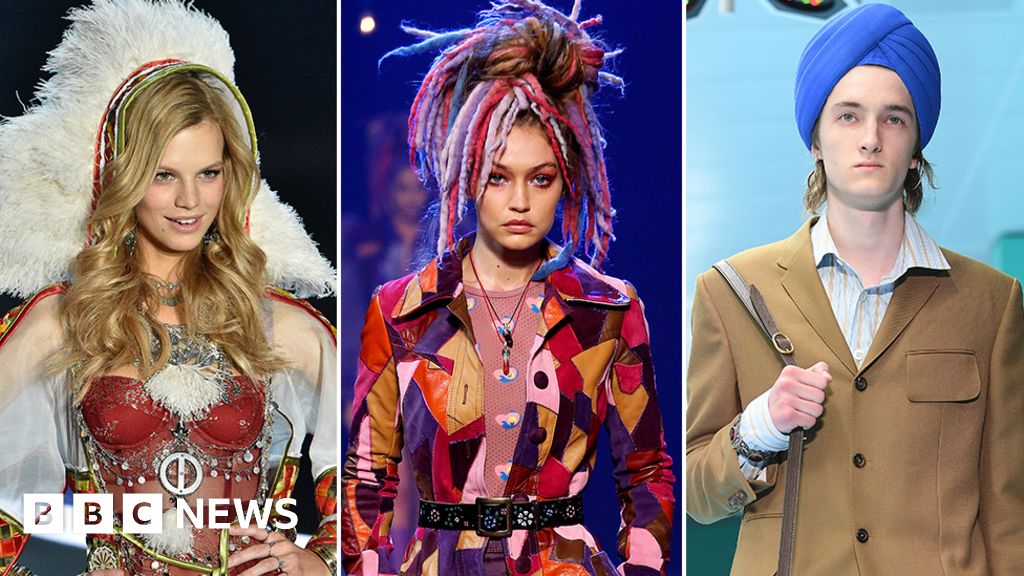Cultural appropriation in fashion is a topic that has garnered increasing attention over the past few years. It reflects a complex and multifaceted issue, intertwined with the fabric of society, and merits a deeper exploration. To fully grasp its implications, it’s essential to comprehend what cultural appropriation entails, how it manifests within fashion and art, and its broader societal ramifications.
Cultural appropriation can be defined as the adoption or use of elements from one culture by individuals or groups belonging to another, often without permission or understanding. This phenomenon frequently transpires within the artistic domains, specifically in fashion, where garments, accessories, and aesthetics from marginalized cultures are commercialized and exploited. The crux of the problem lies not solely in the act of borrowing but in the lack of acknowledgment and respect for the origins of these cultural artifacts.
The fashion industry has a notorious history of appropriating cultural motifs. From the colorful textiles of Indigenous peoples to the vibrant patterns of African garments, many designers have lifted these elements, stripping away their cultural significance. By doing so, they often commodify and dilute the original intent and message, transforming sacred symbols into mere fashion statements. This unanchored usage can elicit feelings of alienation and disrespect among those from the appropriated cultures.
One prominent case in point is the use of Native American headdresses as fashion accessories. Traditionally, these headdresses are emblematic of respect and honor, reserved for individuals who have achieved great accomplishments within their tribes. When they appear on runways or in photo shoots devoid of context, they perpetuate stereotypes and fail to educate consumers about their significance. Such instances prompt an urgent question: When does inspiration transition into appropriation?
The art of fashion thrives on inspiration. Designers often draw from a vast well of sources, reflecting myriad influences and narratives. Yet, the line between admiration and appropriation can sometimes blur. It compels us to engage in critical reflection about the origins of our clothing and the narratives that have shaped them. A mindful approach encourages consumers to think about the implications of their fashion choices, fostering a deeper appreciation for the diversity of cultures.
Social media platforms play a pivotal role in propagating discussions around cultural appropriation. On one hand, they serve as a powerful tool for disseminating awareness and promoting dialogue. On the other, they can also amplify instances of cultural missteps within the industry, creating a platform for marginalized voices. In an age where visibility is crucial, campaigns advocating for cultural sensitivity gain traction, encouraging brands to reassess their approach to design and marketing.
Moreover, brands that commit to ethical practices demonstrate a shift towards a more inclusive and respectful industry. This involves engaging with cultural consultants, involving community representatives in the design process, and ensuring that profits derived from culturally significant apparel are reinvested in the communities that inspired them. This remedial action not only fosters a sense of respect but also creates an avenue for collaboration that enhances the richness of creative expression.
Educational initiatives in fashion design programs are essential for raising awareness about the implications of cultural appropriation. Including cultural studies and ethical practices in the curriculum equips future designers with the tools to navigate this complex terrain. By cultivating an ethos of respect and understanding, the next generation of fashion influencers can emerge with a heightened consciousness of the cultures they engage with.
Collaboration stands as a beacon of potential redemption in the realm of cultural exchange. Instead of appropriation, one can envision a future where cultural appreciation flourishes, cultivating partnerships that respect and celebrate the origins of stylistic influences. This can be achieved through co-creation, where designers from various backgrounds come together to produce work that honors their distinct heritages, sharing stories while creating a tapestry of diverse expressions.
Furthermore, consumer responsibility plays an integral role in shifting the narrative surrounding fashion and cultural appropriation. As consumers become more informed, they wield substantial power in influencing brands to adopt ethical practices. By consciously choosing to support brands that are transparent about their sourcing and design processes, individuals can encourage larger industry shifts toward inclusivity and respect. This culminates in fostering an ecosystem where cultural heritage is preserved and celebrated rather than exploited.
Cultural appropriation raises vital questions about identity, representation, and respect in fashion and art. It highlights the need for a paradigm shift—a transition from mere consumption to appreciation. Engaging with different cultures necessitates an informed and respectful approach, recognizing the nuanced narratives that shapes them. Through thoughtful dialogue, collaboration, and ethical consumerism, the fashion industry can begin to mend the fractures created by appropriation.
The imperative for change is both profound and urgent. Embracing a consciousness that honors and celebrates diversity, rather than appropriating it, promises a future where fashion and cultural expression coexist harmoniously. The dialogue surrounding cultural appropriation is richer than mere condemnation; it opens avenues for curiosity, learning, and ultimately, evolution. By fostering mutual respect, we can transform the fashion landscape into one that cherishes and uplifts all cultures, inviting a more inclusive narrative into its ever-evolving tapestry.
